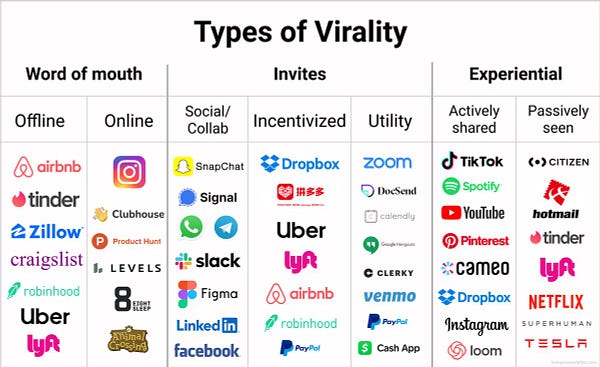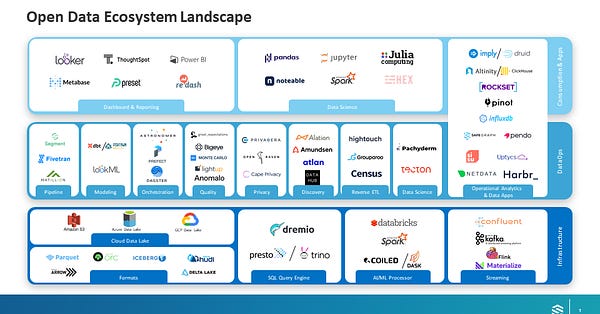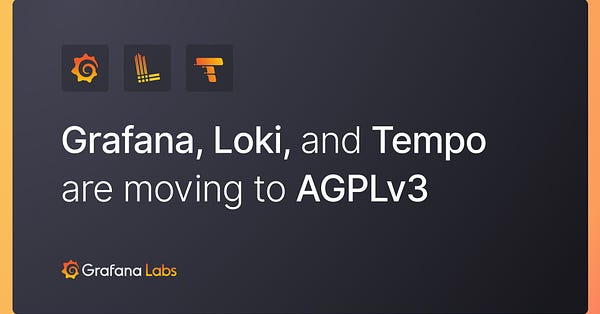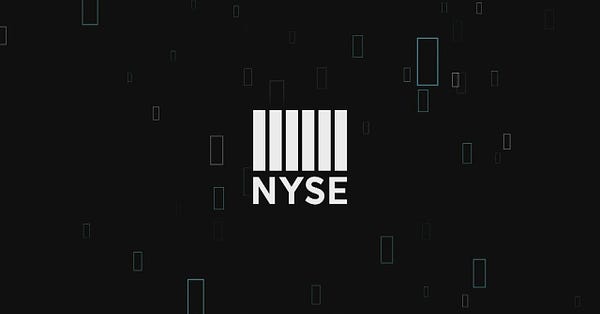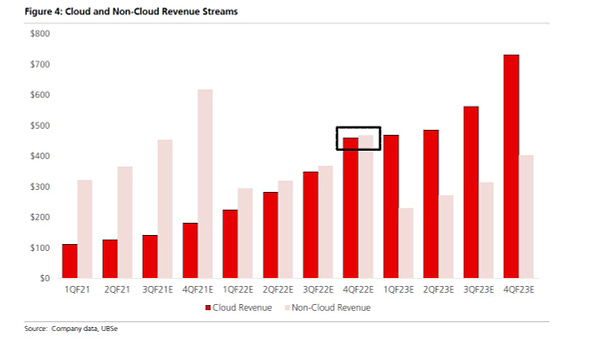

Discover more from What's Hot 🔥 in Enterprise IT/VC
What's 🔥 in Enterprise IT/VC #234
You can't sell platforms - nail the initial product first - Figma masterclass in product execution, listening to customers, earlier entry point in workflow
The big news this week was UiPath’s massive IPO which raised $1.3B of new financing and ended up with a closing market cap of $35.8 billion. It’s a huge accomplishment especially considering how choppy the markets have been as of late (more from CNBC).
While UiPath joins a long roster of high-growth cloud software companies to go public in the last three years, its debut comes amid a shift in investor sentiment. After more than doubling in value last year, the WisdomTree Cloud Computing Fund, consisting of 58 publicly traded cloud software vendors, has dropped 6.7% this year, while the Dow Jones Industrial Average has climbed 11%, as of Tuesday’s close.
One of UiPath’s greatest strengths is its ability to keep customers and encourage them to increase spending over time. In its last fiscal year, UiPath reported net revenue retention of 145%, meaning the average existing customer increased spending by 45% from the prior year.
On the product side, many of you know I’m a huge fan of Figma as I believe they are a walking master class in product led growth. This week Figma did not disappoint as it released its second product, Figjam, an online whiteboard to ideate and brainstorm together (uh oh Miro!). While this looks like another whiteboarding tool, why am I so excited and what lessons can founders learn?


Figma was founded in 2012 and launched its core product in 2015 with a belief that design tools had to be all in one, online, and collaborative from day one as design is not just for designers but other stakeholders as well. So while the initial entry/insertion point to a workflow was around getting designers to use the product, what Figma got right (well covered in Kevin Kwok’s essay) is that design is not just for designers but for teams. So Figma nailed its initial wedge of designers, owned that market, raised $130M+, and ONLY after that, 6 years later, it launched a new product, Figjam, a collaborative whiteboard which is 🔥.

In one fell swoop, Figma just exponentially increased its TAM as any one can use Figjam to collaborate and share ideas. More importantly though, Figma has created an earlier entry point in the design process, the whiteboarding and ideation phase before you actually design.
“Our point of view here was focusing on how to make FigJam work as the first step in the design process, before you go into actually doing design work,” said Figma founder and CEO Dylan Field. “We see people looking for a better, more fluid experience, but we also wanted to make it simple enough to bring other people into the tool.”
Figma has now moved earlier into the design workflow and also expanded its TAM as Figjam can be used for just about any creative, ideation process.

Figjam is also a natural extension as they listened to their users.

Figma also doubled down on the collaboration element by adding voice chat into all of their products.

And now it’s a full end to end platform for the entire design process, 6 years after launching its first product. As mentioned in last week’s newsletter, too many companies are focused on TAM and expanding into new markets too quickly before dominating their own. Figma is another example of nailing its initial market first before expanding too quickly.

Lessons learned from Figma include you can’t sell a platform, nail an initial product first and own the market, listen to your users, entry/insertion point in workflows matter, double down on your strengths (collaboration), and many business use cases involve cross functional teams versus siloed groups.
More to come next week as my firm @boldstartvc held an online discussion yesterday with Kyle Parrish, head of sales at Figma, about the PLG GTM and playbook.
As always, 🙏🏼 for reading and please share with your friends and colleagues!
Scaling Startups
👇🏼💯 So many truths here from Paul Graham’s essay in February, resurfacing h/t Farnam Street Newsletter. For enterprise founders, a reminder that big customers suck in the beginning as they can drain you and low end eats high end or in our lingo if it can go bottoms up/PLG/dev first, then try it.
I learned some useful things ... though they were mostly about what not to do. I learned that it's better for technology companies to be run by product people than sales people (though sales is a real skill and people who are good at it are really good at it), that it leads to bugs when code is edited by too many people, that cheap office space is no bargain if it's depressing, that planned meetings are inferior to corridor conversations, that big, bureaucratic customers are a dangerous source of money, and that there's not much overlap between conventional office hours and the optimal time for hacking, or conventional offices and the optimal place for it. But the most important thing I learned ... is that the low end eats the high end: that it's good to be the "entry level" option, even though that will be less prestigious, because if you're not, someone else will be, and will squash you against the ceiling. Which in turn means that prestige is a danger sign.
🔥 learning from what works for best in class consumer startups always a great start for enterprise PLG cos
Want TechCrunch coverage - just the facts, no flowery language
Enterprise Tech
Where are we in state of software dev and architecture?
And yes this is what great infra teams do and what great infra software enables
Part 2 of Armon Dadgar (Hashicorp) Definitions of Multicloud - workflow portability
Multicloud workflow portability means having development and operations workflows that are compatible across multiple IT environments — whether they be cloud or on-premises. As a user of these portable workflows, you want to be able to use one toolchain, process and knowledge set to manage operations for applications running on Google Cloud, AWS, Azure and on-prem data centers. In other words — one workflow, run anywhere.
What’s the Open Data Ecosystem? Check out Casber Wang’s post from Sapphire Ventures - also great to see two of our portfolio cos Cape Privacy and Harbr represented
Speaking of Cape Privacy, huge congrats on their $20M Series A round led by Evolution Equity and including Tiger Global - check out co-founder Gavin Uhma’s 🧵 on the opportunities ahead for encrypted learning
Important license change from Grafana to Apache 2.0 to AGPLv3 - why - community matters! Read 🧵
Paying for growth and future TAM: “Truly extraordinary: Unicorn Startups Boast 300X Valuations” (The Information) citing cybersecurity startups - Orca and its March funding round at $1.2B valuation on reported $4M ARR and the Wiz at $1.7B valuation
In other funding news for some of the boldstart port cos this week - our friends at Advent International led 2 rounds in our cybersecurity portfolio with BigID adding on another tranche of capital at a $1.25B valuation and Hypr raising $35M Series C to bring true passwordless security to the masses, and finally Kumospace launches new video chat platform - 🤔 Roblox for adults, fun with incredible engagement and growth
 After 10 years, super excited for @Boldstartvc to finally partner w/ @brett1211 @yangzmou Some of best collaboration cos started out in gaming like Slack + Discord and see elements of that already with > 2,000 enterprise companies incl. Google, Shopify + Facebook as customers“At the end of the day, this looks like Roblox but for adults.” — @Kumospace_ president and co-founder @brett1211 #funding https://t.co/kTMR6kKeZs
After 10 years, super excited for @Boldstartvc to finally partner w/ @brett1211 @yangzmou Some of best collaboration cos started out in gaming like Slack + Discord and see elements of that already with > 2,000 enterprise companies incl. Google, Shopify + Facebook as customers“At the end of the day, this looks like Roblox but for adults.” — @Kumospace_ president and co-founder @brett1211 #funding https://t.co/kTMR6kKeZs Built In NYC @BuiltInNewYork
Built In NYC @BuiltInNewYorkInterested in developer tooling for blockchain? Check out this post from Blockdaemon, a portfolio co, on Node 101 and why developers should just focus on their code and why the Heroku-like back-end just works
 Coinbase was top of mind last week but how about underlying infrastructure? 👇🏼Node 101 - One of best reads on blockchain node infra, why it's important + for whom from crypto wallets, exchanges, staking services, trading desks + analytics firms Dev first, back-end abstraction!
Coinbase was top of mind last week but how about underlying infrastructure? 👇🏼Node 101 - One of best reads on blockchain node infra, why it's important + for whom from crypto wallets, exchanges, staking services, trading desks + analytics firms Dev first, back-end abstraction!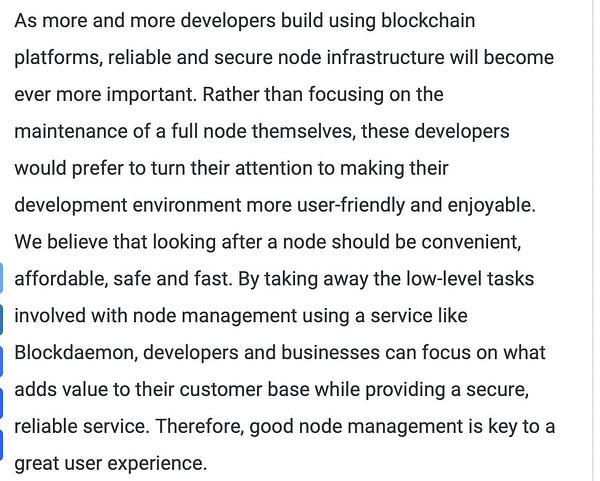 There's a lot that goes on behind the scenes running enterprise grade blockchain node infrastructure. @KevilleConor goes on a node deep-dive on our company blog: https://t.co/hxO7kaBLLk
There's a lot that goes on behind the scenes running enterprise grade blockchain node infrastructure. @KevilleConor goes on a node deep-dive on our company blog: https://t.co/hxO7kaBLLk Blockdaemon @_blockdaemon
Blockdaemon @_blockdaemon
Markets
Congrats to my friends at UiPath and all of their investors - 👇🏼 love the mascot ringing the bell (click through)!
Confluent, event streaming data platform, confidentially files
Amazing progress from Splunk 👇🏼
Subscribe to What's Hot 🔥 in Enterprise IT/VC
Ed Sim's (@boldstartvc) weekly readings and notes on enterprise VC, software, and scaling startups




